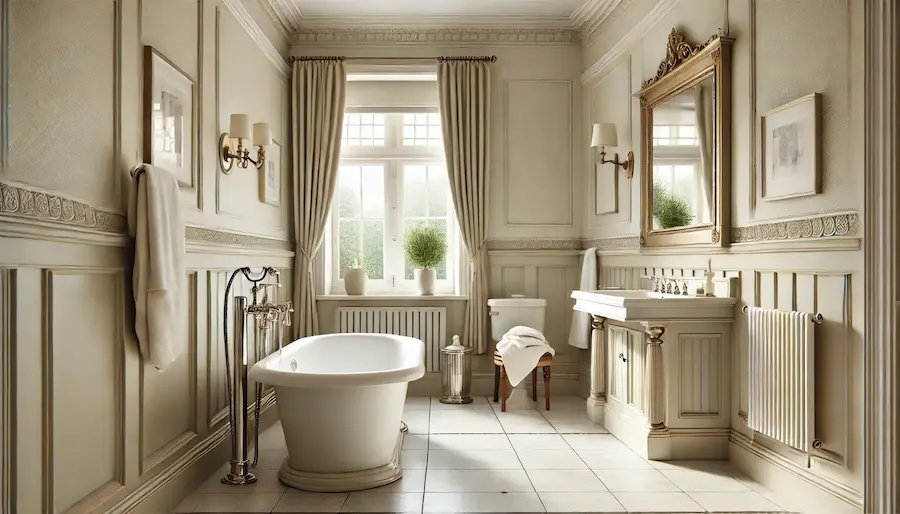Traditional bathrooms exude timeless elegance, blending classic design elements with modern functionality. This article explores the origins, key features, applications, and considerations for incorporating traditional elements into your bathroom.
Introduction to Traditional Bathrooms
A traditional bathroom draws inspiration from historical design trends, emphasizing ornate fixtures, classic color palettes, and intricate details. These spaces offer a sense of warmth and sophistication, creating a serene retreat within the home.
History and Origins of Traditional Bathrooms
The evolution of traditional bathrooms reflects societal shifts and technological advancements:
- 19th Century: Indoor plumbing became more widespread, introducing fixtures such as porcelain claw-foot tubs and pedestal sinks. Bathrooms were adorned with rich colors and intricate details, emphasizing luxury and hygiene.
- Early 20th Century: The Art Deco movement introduced geometric patterns, bold color schemes, and chrome fixtures, adding glamour to bathroom designs. Subway tiles and hexagonal floor tiles became popular, emphasizing cleanliness and style.
- Mid-20th Century: The midcentury modern era embraced simplicity and functionality, with streamlined designs, pastel color palettes, and innovative materials. Bathrooms featured built-in vanities and tiled countertops, reflecting the era’s aesthetic.
Key Features of Traditional Bathrooms
Incorporating traditional elements can transform a bathroom into a classic sanctuary:
- Freestanding Bathtubs: Claw-foot or pedestal tubs serve as focal points, offering both luxury and historical charm.
- Pedestal Sinks: With their clean lines and space-saving design, pedestal sinks bring old-world charm and are ideal for smaller bathrooms.
- Classic Tile Work: Subway tiles, hexagonal floor tiles, and penny tiles in classic patterns contribute to a nostalgic ambiance.
- Antique Fixtures: Brass or chrome faucets, vintage lighting, and ornate mirrors enhance the historical aesthetic.
Applications of Traditional Bathrooms
Traditional bathroom designs can be adapted to various settings:
- Restoration Projects: Preserving original fixtures and designs in historic homes maintains architectural integrity.
- Modern Homes: Introducing traditional elements adds character and warmth, creating a unique blend of old and new.
- Commercial Spaces: Boutique hotels and restaurants often incorporate traditional bathroom designs to evoke nostalgia and enhance guest experience.
Considerations When Choosing Traditional Bathroom Elements
When designing a traditional bathroom, consider the following:
- Space Constraints: Freestanding tubs and large vanities require ample space; ensure your bathroom can accommodate these features without feeling cramped.
- Maintenance: Ornate fixtures and intricate tile work may require more upkeep to maintain their appearance.
- Authenticity: Use period-appropriate materials and designs to achieve a genuine traditional look.
- Modern Amenities: While maintaining a traditional aesthetic, incorporate modern plumbing and lighting to ensure functionality and efficiency.
Conclusion
Traditional bathrooms offer a timeless appeal, combining historical design elements with modern comforts. By understanding their origins and key features, you can create a bathroom space that exudes elegance and sophistication, tailored to your personal taste and the architectural style of your home.
